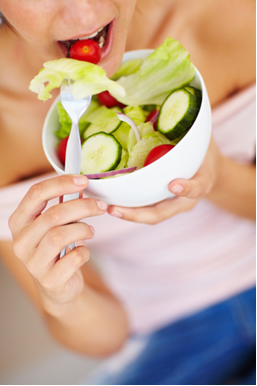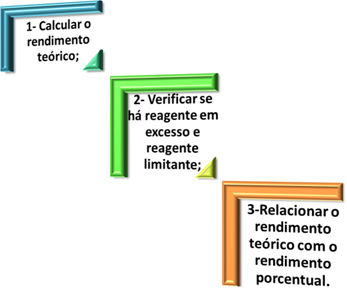In the image above, we have two glasses of water, in the first, effervescent powder was added and in the second, an effervescent tablet was added. If we compare the two cases, in which cup will the antacid have dissolved more quickly?
We know it's in the first one, where we add the powder. This is because the contact surface of the medicine is larger when it is in powder form than in tablet form.
Remember that any reaction only takes place when the reactant particles come into contact, effectively bumping with each other and with the minimum energy required. Therefore, the more fragmented the solid, the greater the amount of particles that will come into contact, also increasing the probability of effective shocks and, finally, increasing the speed of the reaction.
In the case of the tablet, only the particles that are on the surface will react with the water molecules. As they are consumed, the innermost particles will come into contact with the water and will progressively react until all the reagent is gone.
This does not happen in the case of powder, as it has a larger area in contact with water molecules.
Do not stop now... There's more after the advertising ;)
This fact happens in several cases and this leads us to the following generalization:

However, increasing the contact surface only intensifies the reaction speed, but does not increase the quantity of products at the end of the process.
Another example that shows us that increasing the contact surface speeds up the reaction occurs when we eat. The more we chew the food, increasing its contact surface, the faster our digestion will be.

Interestingly, the less we chew, the more sleep we feel after lunch. This is because the gastric juice that digests food has hydrochloric acid (HCl) as its main constituent. For the formation of this acid, H ions are removed+ of the blood, which generates the state of drowsiness, which is called postprandial alkalosis.
The less we chew, the longer the digestion reaction will last and the more ions will be removed from the blood, increasing our desire to sleep.
By Jennifer Fogaça
Graduated in Chemistry
Would you like to reference this text in a school or academic work? Look:
FOGAÇA, Jennifer Rocha Vargas. "Contact Surface and Speed of Reactions"; Brazil School. Available in: https://brasilescola.uol.com.br/quimica/superficie-contato-velocidade-das-reacoes.htm. Accessed on June 27, 2021.



